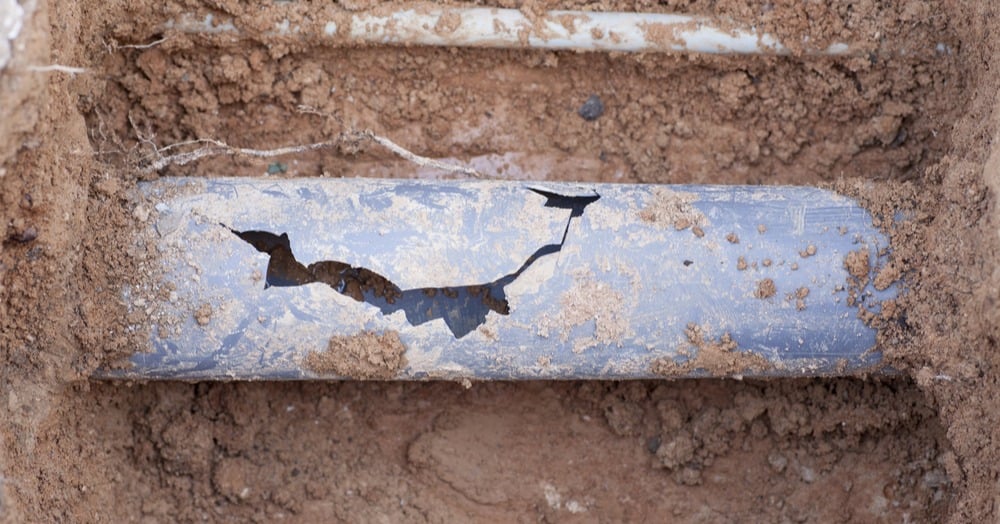There has been much discussion on the need to update, replace and repair the nation’s aging infrastructure. Bridge failures, blackouts and poor water quality are just three of the examples recently in the news. However, right now may present the perfect storm of events to begin many of these overdue projects.
First, the economy is primed to start on the infrastructure rejuvenation. On a recent Fareed Zakaria GPS, Larry Summers, former U.S. Treasury Secretary, said “We have an interest rate of essentially zero. The funds are available. All of the dangers are of spending too little and not too much. We should be starting the process of renewing our infrastructure with maintenance projects that would operate quickly.”
New methods to replace aging pipe systems, new technology and products to replace traditional cabling and new sources of funding are just three examples of the infrastructure overhaul.
Pipe Bursting for Replacement and Rehabilitation of Existing Pipe
According to PE Alliance, HDPE enjoys more than 95% market share of the natural gas market, but just 3% to 5% of the municipal water and sewer market. Pipe bursting, in conjunction with HDPE pipe, is a robust solution for replacing/rehabilitating the nation’s aging infrastructure. Pipe bursting is a trenchless method to replace buried sewer, water and natural gas piping without the need for a traditional construction trench and associated equipment.
In this process, HDPE pipe is pulled through the existing AC (asbestos cement) pipe, essentially ‘bursting’ the older pipe with new high density polyethylene. This less invasive method leaves the remnants of the old pipe in place; no digging, haul-off or disposal is needed. All the asbestos particles remain underground. Other methods of removing asbestos cement pipe are three to five times more expensive than pipe bursting. And, the pipe bursting method is in full compliance with all federal regulations and guidelines.
Pipe bursting can also be used to expand pipeline capacity by replacing smaller diameter pipes with larger ones, or "upsizing." Gas and water industries have done extensive work demonstrating the feasibility of upsizing gas mains, water lines and sewers. Upsizing from 100- to 225-mm diameter is now well established, and pipes of up to 36-in. diameter and greater have been replaced.
Microducting and Micro-cabling for Upgrading Today’s Aging Infrastructure
Microduct conduit is an economical solution for reducing network building, construction and reinstallation costs. Microducts and micro-cabling offer an alternative and less expensive option to rebuild, enhance and improve data pathways for increased data demand. Together, they represent a technological step-change for updating and enhancing the country’s existing and ageing communications infrastructure. MicroPath™, United Poly Systems' exclusive microduct piping system product, is one example of a microduct solution currently on the market.
Microduct products may be installed in direct burial applications via micro-trenching or in microduct pathways via air blowing techniques or traditional cable pulling/pushing. Microducts future-proof networks since additional fiber cables can be placed later in response to demand and capacity increases. Often additional microducts are installed and left open/vacant, providing pathways for future expansion. Alternatively, higher density, higher fiber count microcables can easily be pulled through existing conduit to replace conventional cabling.
CARES Act and Broadband Pilot (ReConnect) programs funding U.S. broadband expansion
One of the lesser known facets of The Coronavirus Aid, Relief, and Economic Security Act, also known as the CARES Act, is how it is helping expand America’s broadband infrastructure. The CARES Act is a $2.2 trillion economic stimulus bill signed into law on March 27, 2020 in response to the economic fallout of the COVID-19 pandemic in the United States.
Prior to the CARES Act, in December of 2019, the Rural Utilities Service, a Rural Development agency of the U.S. Department of Agriculture, published a Funding Opportunity Announcement and solicitation of applications for the Broadband Pilot (ReConnect) program in the Federal Register.
Section 11004 of the CARES Act provides an additional $100 million for ReConnect grants to prevent, prepare for and respond to coronavirus. The additional infrastructure funding remains available until September 30, 2021. A recent UPS blog details the CARES Act and Broadband Pilot ReConnect program and gives several examples of ongoing broadband infrastructure projects.
About United Poly Systems
United Poly Systems produces quality HDPE pipe in diameters from ¾-in. to 26-in. IPS, 4-in. to 24-in. DIPS and ¾-in. to 2-in. CTS for use in many industries including telecommunications, power utility, water, electrical and oil and gas. The market for HDPE pipe continues to expand as initiatives to improve, repair and expand the country’s infrastructure are implemented.
Our off-the-shelf HDPE conduit/pipe is available in a variety of sizes, colors, dimensions and lengths, with or without stripes. We also offer fully customizable HDPE conduit options. In addition, piping can be customized with a ribbed interior (to maximize the distance cable may be pulled or jetted), pull tape, or a lubricated interior (for easier installation).
Success at UPS can be attributed to our vast experience, extensive client relationships, state-of-the-art manufacturing and quality processes. Our agile business model that allows UPS to quickly meet customers’ needs without the overhead expenses that are incurred by many of the larger producers in the industry.
Conveniently located in Springfield, Missouri and Albuquerque, New Mexico, United Poly Systems can provide quick delivery to much of the U.S. market.

